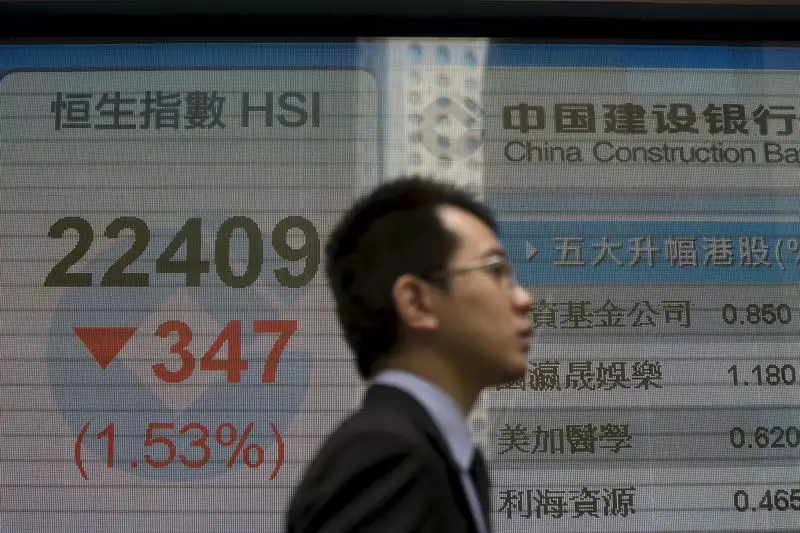In recent trading, Asian stock markets seemed to express a mix of trepidation and cautious optimism, responding to an array of global economic signals. While many indices experienced declines, a notable exception was found in China, where the markets witnessed modest gains. The backdrop of the U.S. interest rate situation and political climate surrounding the upcoming presidential elections has created an atmosphere of considerable uncertainty, leading investors to adopt more risk-averse strategies.
Asian markets took cues from a tempered day on Wall Street, where key U.S. stock indexes slipped back from their previously established all-time highs. The decline can be attributed to escalating Treasury yields, which have created concern over rising borrowing costs and potential implications for economic growth. With the earnings season underway, investors on both sides of the Pacific are poised to analyze upcoming reports as they seek insight into corporate health amid shifting economic waters.
U.S. stock futures displayed a mildly bearish tone during Asian trading hours, indicating that uncertainty continues to hover over market sentiment. The political climate is heating up ahead of the U.S. presidential elections, and recent polls suggest Republican candidate Donald Trump is gaining traction against Vice President Kamala Harris. This political dynamic adds another layer of unpredictability to market behavior.
Japan’s Nikkei 225 index stood out as the most significant loser in the region, plummeting by 1.7%. The fallout was exacerbated by the yen reaching its weakest value in nearly three months, which traditionally would favor export-driven firms. However, in this instance, the specter of uncertainty about the Bank of Japan’s capacity to raise interest rates outweighed any potential benefits this trend might provide exporters.
Adding to the complexity, Japan is on the brink of general elections, which will further influence market dynamics. Upcoming inflation data from Tokyo, set to be released shortly, is also likely to be scrutinized, as it may provide critical clues regarding future monetary policies.
The broader trend in Asia was characterized by declines, with indices such as South Korea’s KOSPI and Australia’s ASX 200 both dipped over 1%. In the case of Australia, the drop appeared to reflect profit-taking behaviors following earlier record-reaching highs in October.
Interestingly, China emerged as a beacon of resilience in this otherwise pessimistic landscape. The Shanghai Shenzhen CSI 300 and Shanghai Composite indices both gained ground, buoyed by a larger-than-anticipated cut in the People’s Bank of China’s benchmark loan prime rate. This decision was part of a broader push by Beijing to stimulate economic growth amid mounting pressures.
Overall, the Asian stock market landscape remains a patchwork of conflicting signals, dictated by global economic events and regional circumstances. While investors are cautiously observing developments in the U.S., the mixed performances across various markets signal a careful navigation through both domestic and foreign uncertainties. As earnings seasons unfold and elections loom, traders will have to remain vigilant, prepared for swift changes in market sentiment.

